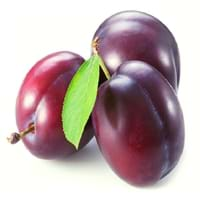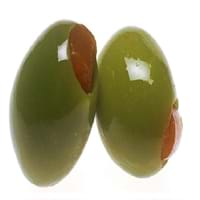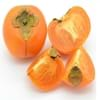Health Benefits
Cancer prevention, Cures gastro-intestinal troubles, Heart care, Increase in haemoglobin, Prevents diabetes
Cancer prevention, Helps in cartilage regeneration, Prevents macular degeneration, Treatment of alzheimer's disease
General Benefits
Anti-inflammatory properties, Boosts immune system, Digestive aid, Eye care, Flu treatment, Helps in weight loss, Maintains healthy cholesterol level, Treatment of common cold
Anti oxidant properties, Anti-inflammatory properties, Boosts immune system, Controls blood pressure, Digestive aid, Maintains healthy cholesterol level
Skin Benefits
Anti-aging benefits, Brightens and lightens complexion, Reduces wrinkles, Skin revitalization, Treatment of dark spots
Hydrates skin, Skin rejuvenation, Treatment of skin diseases
Hair Benefits
Prevents hair loss, Promotes longer and healthier hair, Protects hair, Remedy for split ends, Treatment of dandruff
Acts as moisturizer, Good conditioner, Regulates hair growth
Allergy Symptoms
Abdominal pains, Anaphylaxis, Vomiting
NA
Side Effects
Allergic reaction
Affects blood glucose levels, Dizziness, Stomach pain
Best Time to Eat
As a snack in the late afternoon, Eat the fresh ones, avoid mixing with any other foods, don't eat after meal., Morning time (before lunch)
Hardly eaten raw, Olive oil is consumed for many purposes.
Vitamin B5 (Pantothenic Acid)
Vitamin C (Ascorbic Acid)
Vitamin K (Phyllochinone)
Phytosterol
Not Available
Calories in Fresh Fruit with Peel
Calories in Fresh Fruit without Peel
Not Available
Not Available
Calories in Frozen Form
Not Available
Type
Tree fruit
Tree fruit
Season
Summer
Spring, Summer
Varieties
Victoria, President, Czar, Ariel, Avalon and Oullins Gage
Manzanillo, Sevillano, Mission, Ascolano, Barouni, Gordal, Rubra and Picholine
Color
Pink, Purple, Red
Black, Green, Purple, Yellow
Inside Color
Yellow
Brown
Taste
Juicy, Sweet, Tart
Bitter
Origin
Caucasus
Eastern Mediterranean Region
Soil Type
Clay, Loam, Sandy loam
Well-drained
Climatic Conditions
Cold
Warm to hot climate
Facts about
- In china, plums are used for production of wine.
- A chemical called amygdalin found in plum seeds, turns into toxic compound in human body.
- Plum tree produces fruit 3-5 yrs after planting.
- In ancient Greece, 1st eye shadow was made by adding olive oil in ground charcoal.
- The most expensive form of olive oil is Extra Virgin.
- Largest type of olive tree is known as donkey tree & smallest one is called bullet.
Other Countries
Bosnia, Chile, India, Iran, Italy, Romania, Serbia, Turkey, United States of America
Algeria, Egypt, Greece, Italy, Morocco, Portugal, Syria, Tunisia, Turkey
Top Importer
United Kingdom
United States of America
Botanical Name
Prunus domestica
Olea europaea
Synonym
Not Available
Not Available
Subkingdom
Tracheobionta
Tracheobionta
Division
Magnoliophyta
Magnoliophyta
Class
Magnoliopsida
Magnoliopsida
Species
P. domestica
O. europaea
Difference Between Plum and Olive
We might think that Plum and Olive are similar with respect to nutritional value and health benefits. But the nutrient content of both fruits is different. Plum and Olive Facts such as their taste, shape, color, and size are also distinct. The difference between Plum and Olive is explained here.
The amount of calories in 100 gm of fresh Plum and Olive with peel is 46.00 kcal and 115.00 kcal and the amount of calories without peel is Not Available and Not Available respectively. Thus, Plum and Olive belong to and category.These fruits might or might not differ with respect to their scientific classification. The order of Plum and Olive is Rosales and Lamiales respectively. Plum belongs to Rosaceae family and Olive belongs to Oleaceae family. Plum belongs to Prunus genus of P. domestica species and Olive belongs to Olea genus of O. europaea species. Beings plants, both fruits belong to Plantae Kingdom.









